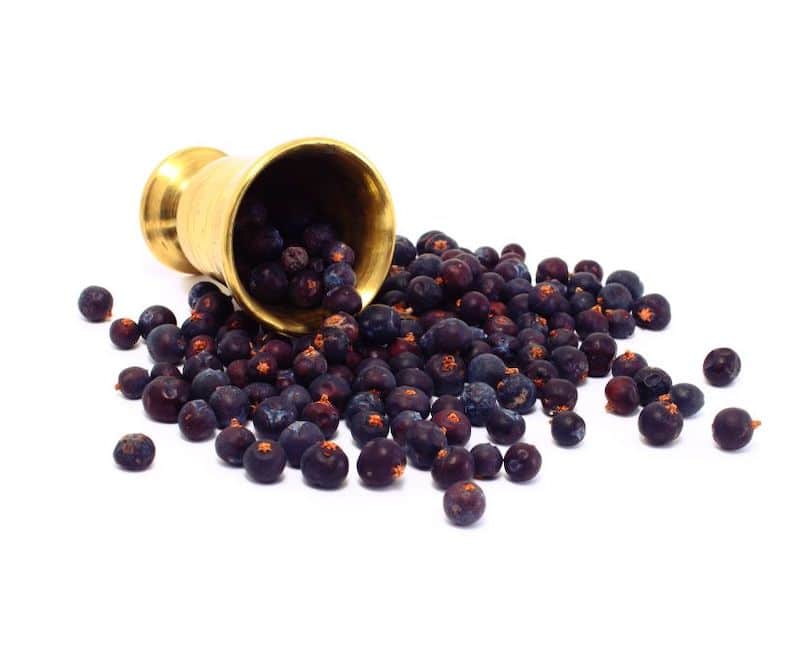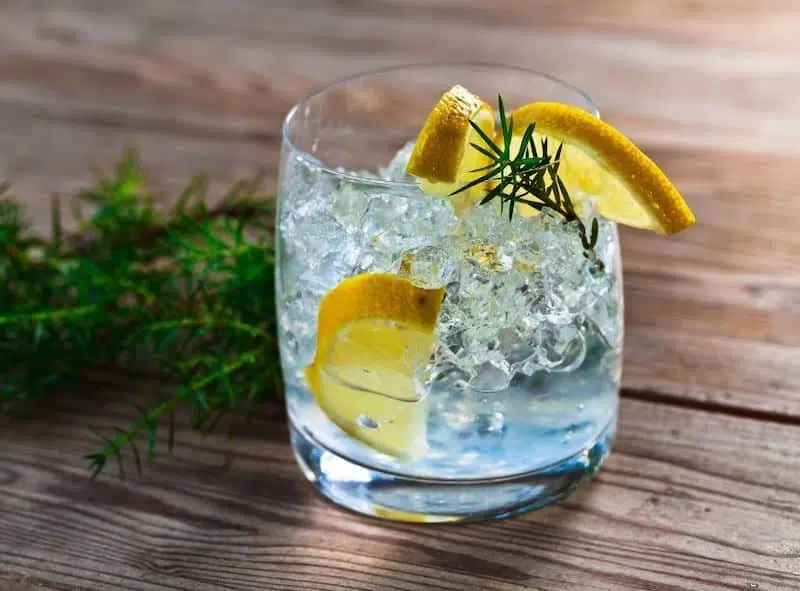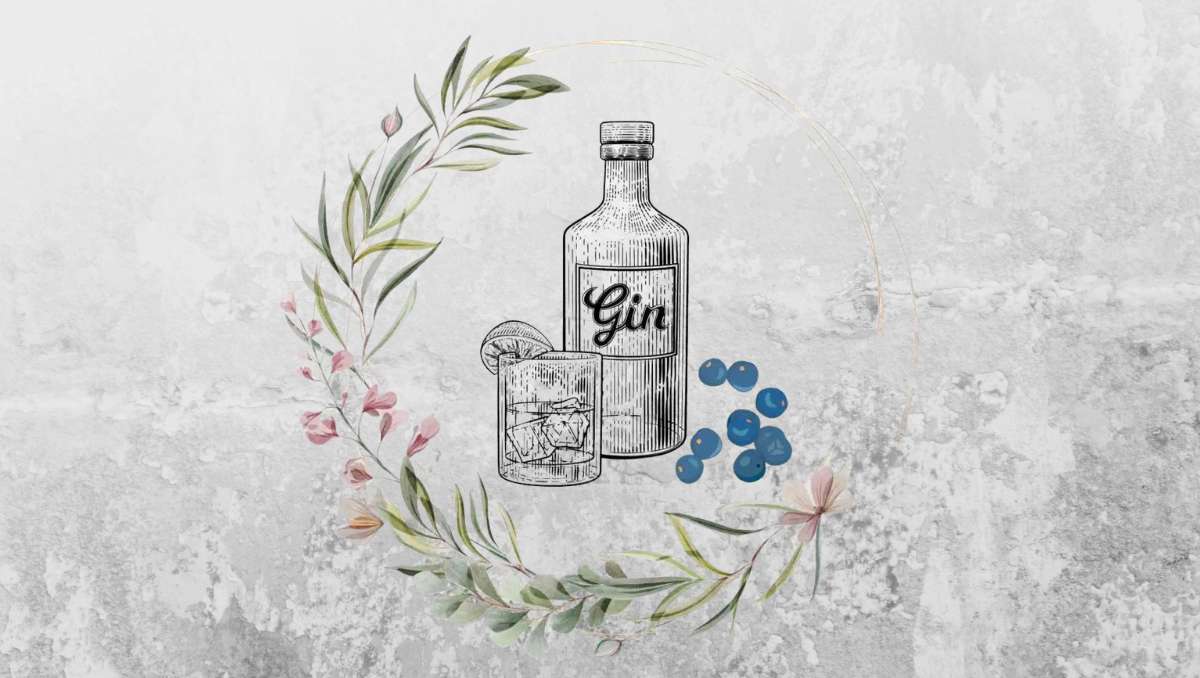Over the last two decades, gin became one of the most popular spirits and a favorite cocktail base of many. The spirit infused with juniper berries has always played a vital role in mixology, but thanks to modern types and flavor profiles, it rose to new heights.
Still, answering the question of what Gin actually is, is not as straightforward as it may seem. So, what turns a clear, distilled grain spirit into Gin?
Gin Fact Sheet
- Spirit base: Mostly grain but also potato, grapes, etc.
- ABV: 37.5% to 57%
- Proof: 75 to 114
- Calories per ounce: 57 to 92
- Origin: England & the Netherlands
- Color: transparent (unaged), light golden (cask-aged), red (Sloe gin)
- Best served: Highballs or cocktails
What is Gin?
Gin is a distilled spirit infused with juniper berries and additional botanicals. It's typically clear unless having been aged, artificially or naturally colored after distillation, or turned into a liqueur known as Sloe gin.
The ABV of gin has to be at least 40% in the US. In the EU and other parts of the world, the alcohol content typically ranges between 37.5% and 57%.
Usually, the base spirit is obtained from grains, but other ingredients, like potatoes or grapes, can be used as well.
Legal Requirements for Gin
Besides juniper berries, gin can be flavored with all sorts of botanicals. There are barely any limits to what producers can and do use. You can find classic flavorings like citrus peels or angelica roots and exotic ones like Kalahari truffles, seaweed, and even meat.
So, according to EU regulations, these are the legal requirements a spirit must fulfill to carry the name gin:
- A minimum ABV of 37.5% - with the single exception of Sloe gin
- The main flavoring must be from juniper berries
That's basically it. Thus, it's no wonder that countless new brands enter the market each year.

How Gin tastes
Gin usually has a clear, fresh, and crisp taste. However, the variety of flavors is enormous.
A traditional Dry Gin tastes slightly herbal and often has citrus notes and a spice mix in the background. The juniper notes are well-pronounced, and the other botanicals are mainly there to build complexity.
Nevertheless, the taste of gin heavily depends on the type and on the botanicals used in the production process. More modern expressions reduce the junipery notes within the allowed limits. Instead, these gins pronounce citric, floral, or herbal flavors.
The different types
The traditional types of gin are London Dry and Dry Gin. More modern variations include New Western Dry Gin or Cask-aged Gin. When you get one of these DIY Gin kits, you will end up with a type called Bathtub Gin.
Here's a quick overview of the most common styles available:
- London Dry Gin
- Dry Gin
- Plymouth Gin
- Sloe Gin
- New Western Dry Gin
- Old Tom Gin
- Reserve / Cask-aged Gin
- Compound / Bathtub Gin
- Genever
If you want to go a little more into detail, read our guide to the different gin types.
The history of Gin
The origin of gin likely goes back about 1000 years, but there are a lot of gaps and holes to fill. So I want to give you a rough timeline of the events that lead to the gin of today:
The early mentions
The earliest roots date back to the 11th century. Back then, monks in Italy created medical tonics reminiscent of gin, containing alcohol infused with juniper berries.
The earliest reference to Jenever, another predecessor, dates back to the 13th century. However, this reference was just a mention, and the earliest printed recipe followed in the 16th century.
Later, during the 17th century, Dutch and Flemish distillers established the re-distillation of grain spirits with additional ingredients like juniper berries, anise, coriander, and caraway.
Those spirits were sold in pharmacies to cure numerous diseases like kidney or stomach ailments and gallstones.
The Gin Craze
In the early 17th century, a slightly modified form of gin came up in England. The popularity of this juniper-infused spirit skyrocketed once the British government allowed production without the need for a license.
That, in turn, led to lower gin prices. In the time that followed, gin was so cheap that people, particularly the poor, drank way too much of the strong alcohol. The years from 1730 to 1750 became known as the Gin Craze, with over 7000 gin shops in London alone.
Distilled Gin
Only in 1751 did consumption decline - probably due to increased grain prices. Around the same time, a sweeter style of gin, called Old Tom, came up. It lost popularity around 1830 when the column still was invented, and people started distilling London Dry Gin.
The quality of London Dry Gin evolved over the decades, but, apart from that, things didn't change much. In the early 2010s, something shifted, and gin became a worldwide phenomenon.
You can read more on the entire history of gin here.

The 4 ways of making Gin
Gin can be made in a variety of ways. For instance, you can infuse the spirit with botanicals by macerating them hours before the actual distillation or skip maceration and add them just when re-distilling the base spirit like Tanqueray does.
In general, gin is produced in one of the following 4 ways or uses a combination of these methods:
- Maceration and regular distillation
- Vapor infusion
- Vacuum distillation
- Cold-compounding (like in Compound Gin or Bathtub Gin)
Compound Gin, also known as Bathtub Gin, uses a very simple approach. A neutral base spirit is infused with fruits, herbs, peels, and other botanicals.

How to drink Gin
The most popular way to drink the juniper-infused spirit is in a Gin & Tonic or a Dry Martini. Besides these two-ingredient drinks, there are many classic Gin Cocktails with a spot on bar menus everywhere in the world, like the Negroni, the Aviation, the Gin Basil Smash, and many more.
The huge range of flavors makes selecting the perfect gin for a cocktail challenging. You can find some of our recommendations here:

